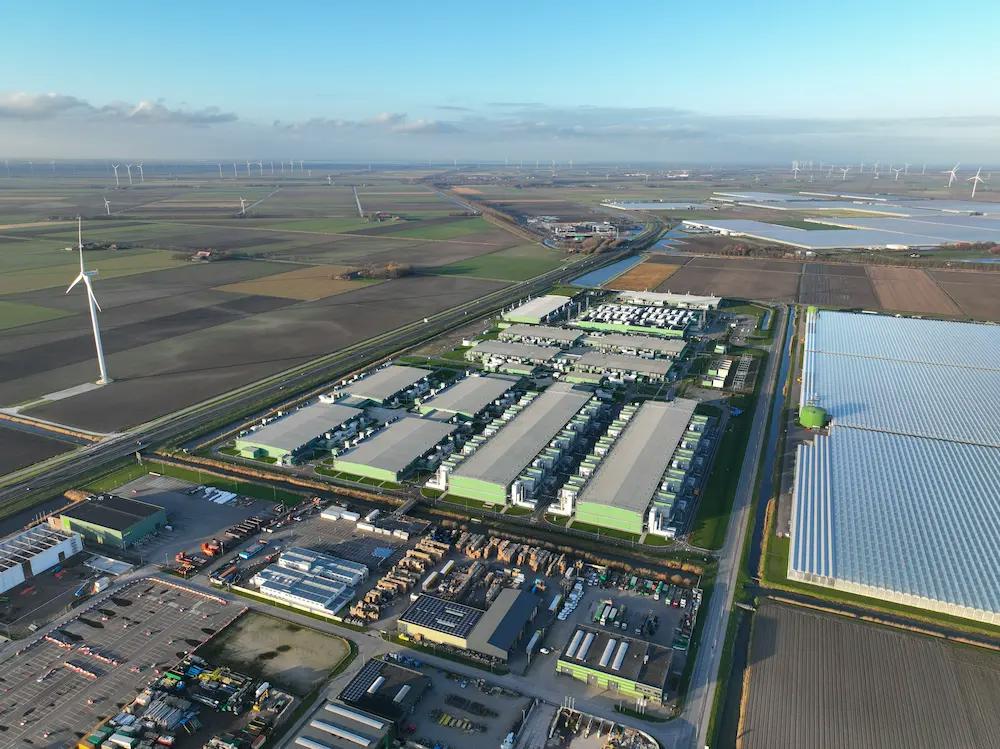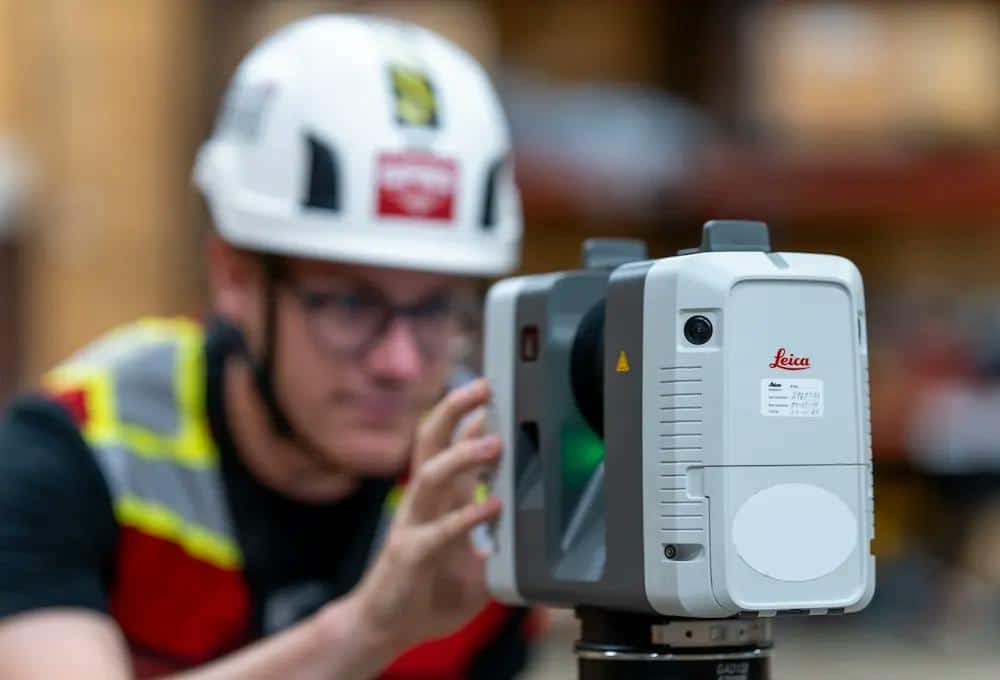How the International Data Center Boom is Driving Innovation in Construction
As the demand for larger, more powerful data centers skyrockets, the construction industry is responding with remarkable innovations. From energy solutions to modular construction, companies are finding new ways to overcome the growing challenges of building these crucial infrastructure hubs.

Data centers all over the globe are looking for clean, green energy alternatives to traditional grid use.
The Growing Energy Demands of Data Centers
In today’s digital world, data centers are essential. They power the technologies that we use every day, from artificial intelligence to cloud storage, and as these technologies evolve, so does the need for more sophisticated data centers. According to Propmodo, the energy demands for new data centers are increasing alongside investments in their construction.
Major tech companies such as Microsoft, Google, Meta, and Amazon Web Services are expanding their data center operations, putting immense pressure on energy grids. These data centers, known as hyperscale centers, have grown significantly in recent years, with energy consumption expanding from dozens of megawatts to hundreds. Some tech firms are even looking for locations capable of supporting more than a gigawatt of capacity. To put this into perspective, a gigawatt can provide energy for approximately 900,000 households for a full year, roughly the size of a U.S. city.
In 2023, data centers in the U.S. used a staggering 19 gigawatts of power. By 2026, this figure is projected to rise to 25 gigawatts, which will account for about 6% of the country’s total power usage. With this rapid growth, tech companies are now focusing on innovative solutions to address their energy consumption and cooling needs.
Pioneering Energy Solutions
The need for alternative energy solutions has never been greater. To meet the rising demand for power, tech companies are getting creative. For example, Amazon recently acquired a 1,200-acre data center campus in rural Pennsylvania, which will be powered by the nearby 2.5-gigawatt Susquehanna Steam Electric Station, a nuclear power plant. Nuclear power, known for its near-zero emissions once operational, is increasingly being explored as a sustainable energy option for large-scale data centers.
Meta is also exploring new cooling techniques to manage the heat generated by high-performance computing. The company is fast-tracking the adoption of liquid cooling, a method that transfers heat away from computer components more efficiently than traditional air cooling. Meanwhile, IBM and Schneider Electric are testing innovative cooling solutions, such as rear-door, self-contained water-cooling units, which are designed to improve energy efficiency in densely packed data center environments.
These pioneering energy solutions demonstrate the lengths to which tech companies are going to ensure that their data centers are not only more powerful but also more sustainable.
Modular Construction: Tackling Supply Chain & Construction Challenges
On the construction side, developers are facing a range of obstacles. Supply chain disruptions have resulted in longer lead times for necessary equipment. In addition, the availability of land is limited, and obtaining permits can be a lengthy process, with some communities resisting new developments.
To address these challenges, many developers are turning to prefabrication techniques. Prefabricated modular designs have been a game-changer for the construction of data centers, allowing for faster completion times, reduced costs, and improved sustainability. For instance, a recent project in Europe managed to reduce the cost of building a 45-megawatt data center by 20%, while also trimming the construction timeline from 17 months to just 11 months, thanks to the use of modular components for electrical and cooling systems.
As data centers continue to scale up, there is also an increasing need for localized power generation. Nuclear power is becoming a more viable option for some hyperscale data centers due to its reliability and low emissions. Small modular reactors (SMRs), which are factory-built and far smaller than traditional nuclear plants, are gaining interest as a potential solution. These reactors can be safely located near population centers and feature advanced safety systems that require no human intervention for shutdown, significantly reducing the risk of a radioactive incident.
Keeping Data Center Projects on Track
As the number of data centers across the globe continues to grow, keeping these massive construction projects on schedule is essential. In the U.S. alone, there were 5,381 data centers as of March 2024, according to Statista. For comparison, Germany, which ranks second globally, has just 521, while China and India, two of the most populous nations, together have only 612 data centers.
The demand for data centers is expected to surge further as the world becomes more interconnected. The Birmingham Group’s President and CEO, Brian Binke, highlighted this trend in a recent blog post: “With companies like Google, Amazon, and Facebook leading the charge, data center construction will continue to thrive, supporting the digital infrastructure needed for a connected future.”
To help ensure that data center construction projects stay on track, companies like GPRS provide a full suite of services that are critical for preventing delays and avoiding costly mistakes. GPRS specializes in subsurface damage prevention, offering services such as concrete scanning, utility locating, video pipe inspection, and leak detection. These services are essential when it comes to preventing subsurface damage during excavation or when drilling and cutting through concrete.
In addition to subsurface scanning, GPRS provides advanced 3D laser scanning and photogrammetry services. These technologies deliver highly accurate data, supporting project design as well as future operations and maintenance (O&M) efforts. GPRS’ Mapping & Modeling Team can also customize this data into any format or software, depending on the client’s needs.

A 3D laser scanner can capture up to 2 million data points per second with 2-4mm accuracy, making it an efficient existing conditions capture tool for prefabrication design purposes.
GPRS’ proprietary cloud-based platform, SiteMap® (patent pending), offers 24/7 access to this field-verified data. SiteMap® enhances team collaboration and asset protection, allowing for real-time communication from any computer, tablet, or mobile device. By ensuring that critical data is easily accessible, this platform helps prevent costly delays and keeps projects moving forward efficiently.
The Future of Data Center Construction
The explosion in demand for data centers is reshaping the construction industry. As companies innovate to meet the challenges of energy consumption, cooling needs, and project timelines, the integration of advanced technologies such as modular construction, nuclear power, and precision scanning is becoming the norm. With the help of specialized partners like GPRS, tech firms can continue to build the infrastructure needed to support our increasingly digital world, ensuring that data centers are not only larger and more powerful but also more efficient and sustainable than ever before.
GPRS Intelligently Visualizes The Built World® for customers nationwide. To see how SiteMap® helps you see your world, above and below-ground, click below.
